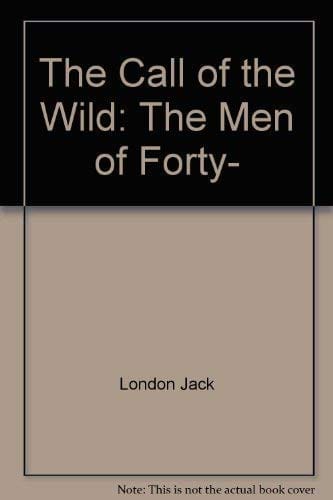The Call of the Wild: Why Jack London’s Classic Still Matters Today
A deep dive into Jack London’s The Call of the Wild—plot, themes, and why Buck’s journey from domestic pet to alpha wolf still captivates modern readers.

Introduction: A Howl from 1903
When The Call of the Wild first hit shelves in 1903, the slim adventure novel turned Jack London into a literary celebrity almost overnight. More than a century later, the tale of Buck—a St. Bernard–Scotch Collie torn from a comfy California ranch and thrust into the brutal Yukon—continues to sell in the millions and inspire fresh film adaptations. What makes this story of fur, fangs, and frozen trails endure while many contemporaries have slipped into obscurity? To answer, we must follow Buck’s pawprints through plot, theme, and cultural legacy.
The Story in a Nutshell
London wastes no time yanking Buck from his Edenic life and tossing him into the chaos of the Klondike Gold Rush. Sold as a sled dog, Buck learns “the law of club and fang,” surviving savage beatings, deadly dog fights, and Arctic blizzards. Each setback strips away layers of civilization and awakens ancient instincts buried in his DNA. After drifting through a series of hard-driving masters, Buck finally finds compassion in prospector John Thornton. Yet even that bond cannot silence the call emanating from the wild forests. When Thornton is murdered by unfriendly miners, Buck answers fully, leading a wolf pack and becoming, in local legend, a ghostly “Evil Spirit” that haunts the valley. The narrative arc is lean, visceral, and inexorably driven toward reclaiming a primal heritage.
Instinct Versus Civilization
The novel’s central tension pits ingrained canine instinct against the veneer of human-imposed order. London writes at a time when Darwin’s theories still crackled with controversy, and Buck’s regression serves as both validation and warning. On one hand, instinct equips him to survive where polite training fails; on the other, it dismantles the comforting myth that culture can permanently tame nature. Readers sense the thrill of unleashed potential yet also confront the fragility of the social contract—an idea that resonates whenever modern life feels one crisis away from chaos.
Nature’s Harsh but Honest Lessons
Set amid the unforgiving Yukon, The Call of the Wild uses environment as more than backdrop; it is an active antagonist and guru. Freezing wind, scarce food, and treacherous ice trails teach Buck lessons that no kennel could provide. London’s journalistic eye for detail—borne of his own Klondike stint—makes each crack of the sled whip or snap of ice palpable. The landscape enforces an unflinching meritocracy where weakness is fatal and efficiency is sacred. Readers gulp this cold air and emerge mindful that the natural world sets its own nonnegotiable terms, a truth that climate change only underscores today.
Buck: More Than a Dog, Less Than a Man
Critics often call Buck a proxy for human striving, but London carefully keeps him canid. Buck does not speak in words, yet his inner monologues pulse with desire, calculation, and memory. This middle ground invites empathy without collapsing species boundaries, sharpening the allegory. Buck’s journey from pampered pet to alpha wolf mirrors any individual quest for authentic identity: peeling away societal expectations, discovering latent talents, and making irreversible choices. The animal perspective also frees London to critique human folly—from greedy prospectors to sadistic sled owners—without resorting to moralizing sermons.
Survival, Success, and Social Darwinism
London was steeped in the era’s Social Darwinism, and some passages unapologetically celebrate the “survival of the fittest.” While modern readers rightly question the misuse of such ideas to justify inequality, the novel’s nuance lies in showing cooperation as vital to fitness. Buck thrives not only by out-muscling rivals but by synchronizing with sled teams and later leading a pack. The text suggests that adaptability—knowing when to fight, yield, or ally—trumps brute strength alone, a lesson equally applicable to boardrooms and classrooms.
Why Modern Readers Still Feel the Call
Today’s urban professionals may never hitch a dog team, yet Buck’s awakening echoes common longings: to escape digital overload, to prove capability under real pressure, to reconnect with ecosystems rather than merely consume them. The novel also speaks to anyone navigating disruptive job markets; Buck’s abrupt career change from pet to sled dog mirrors career pivots compelled by economic upheaval. His success strategy—observe quickly, learn ruthlessly, trust instincts—reads like a wilderness version of agile project management.
An Environmental Lens for the 21st Century
Reexamined through an ecological lens, The Call of the Wild offers cautionary insights. London depicts nature as resilient yet finite; overworked dogs die, and reckless gold hunters trigger violence. In an age of melting glaciers and threatened species, Buck’s story becomes a parable of what happens when resource lust ignores ecological limits. Assigning the novel in classrooms alongside climate science can spark dialogue on stewardship versus exploitation, turning a century-old adventure into a portal for environmental ethics.
Adaptations and Cultural Legacy
From silent films in 1923 to the 2020 Harrison Ford vehicle, Hollywood has repeatedly answered Buck’s cry. Each adaptation recalibrates the human–dog ratio, technology level, and sentimentality, yet the spine of the story endures. Beyond screen versions, the novel influences video games, outdoor gear marketing, and even pet-training philosophies that tout “primal nutrition.” Its phrases—“the dominant primordial beast” and “the lash of the whip”—pepper pop culture, proving that London tapped a universal chord that vibrates across media.
Conclusion: Hearing Your Own Howl
The Call of the Wild endures because it dramatizes a question that never ages: What parts of us are genuine, and what parts are mere domestication? Buck sheds comfort, status, and even companionship to chase a song he alone can hear—a feat equal parts exhilarating and terrifying. Whether you read the novel as an adventure, a psychological case study, or an ecological warning, it prods you to locate your inner wilderness. In answering that summons, readers keep Jack London’s most famous creation forever running through the snow.



